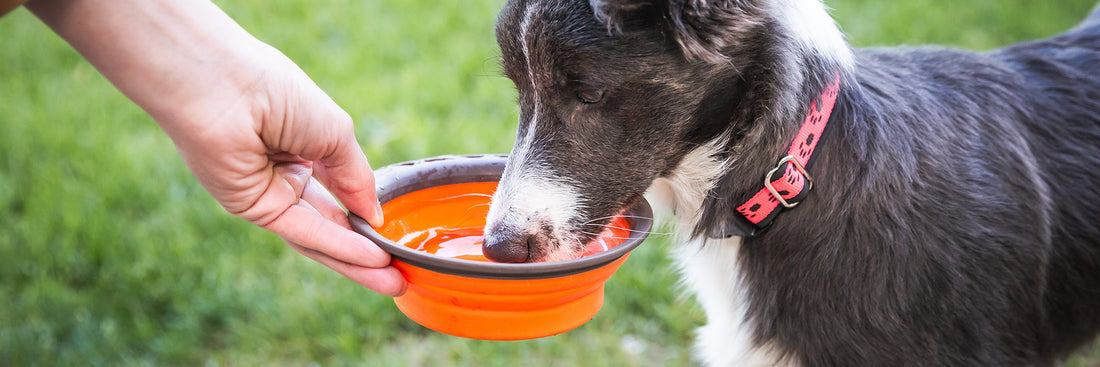We all know the perks of warmer days and lighter evenings, from longer dog walks and less muddy prints, to more time in the garden for cats. But rising temperatures can bring new challenges. Read on to stay on top of pet hydration as it gets milder and milder.
As permanent wearers of fur coats, dogs and cats often don't cope with the heat as well as their human owners. Temperature increases aren’t easy to adapt to as cats and dogs have limited ability to sweat. In fact, did you know sweat glands involved in cooling down are found only in the pads of the paws?
For cats and dogs, cooling down happens through panting, convection (movement of air over the body) and also grooming. As you can imagine, panting is thirsty work, so an unlimited supply of cool water is very much needed in hot weather.
Keeping hydrated
Of course, we can’t talk about hydration and water balance without talking about the kidneys. Kidneys have many roles, such as helping to control blood pressure and make hormones. But perhaps the most important roles the kidneys play are in balancing water and salt levels in the body and ‘cleaning’ the blood.
If pets are not properly hydrated, in other words, not drinking enough fluid to meet their requirements, the kidneys will attempt to save water by allowing less fluid to escape from the body. As a result the urine will become more concentrated – looking darker in colour and having a stronger smell.
If a pet’s kidneys are damaged (as often occurs as a result of the aging process) then it is usual to notice them drinking more than usual and also passing more urine. If the kidneys stop working completely though, sometimes little or no urine is produced.
It’s very important if your pet changes the amount they drink, or the amount of urine they pass, to seek expert help from a vet. As well as kidney disease, changes in thirst can also be caused by diabetes and other diseases, as well as hot weather.
How does a pet get dehydrated?
The simplest way a pet can get dehydrated is by not drinking enough to meet its requirements. That might be because the water bowl hasn’t been filled up, or because there is a bit more competition at the water bowl. If one of your pets tends to be dominant, then provide more water bowls in different locations. It may be that as the temperature rises, water becomes a resource that your pets are willing to fight over. Make sure for older pets it’s easy to access too – maybe even putting the bowl on a box or a stand so it’s at head height.
Pets can also get dehydrated if they are losing water faster than before. This can be because they are panting and losing fluid that way, or if they have an illness like vomiting or diarrhoea which can result in fluid being lost from the digestive tract. A dehydrated pet can become very ill, very quickly.
Signs of dehydration
Grasp a handful of your dog or cat’s skin on the back and then release – it will instantly fall back into place. Dehydration causes the skin to lose its elasticity so it will be slower to sink back into place. Mild dehydration can usually be corrected pretty quickly by providing fluid to drink. Sometimes fluid has to be provided into the pet’s bloodstream through a drip if there is reason that he or she cannot drink, or cannot absorb fluid fast enough from the digestive system.
Other signs that your pet might be more seriously dehydrated include:
- A fast heart rate
- Dry tacky gums and mouth
- Sunken eyes
- Cold ears and paws
A pet that is dehydrated can go into shock, so always seek veterinary help if you think this could be a possibility.
Summer does provide lots of great opportunities for you and your pet to enjoy life outdoors. Just be sure to be prepared and to provide plenty of water as needed.
For more ideas on getting ready for summer with your pet, check out this article about how to keep pets cool during a heatwave.






Recent post